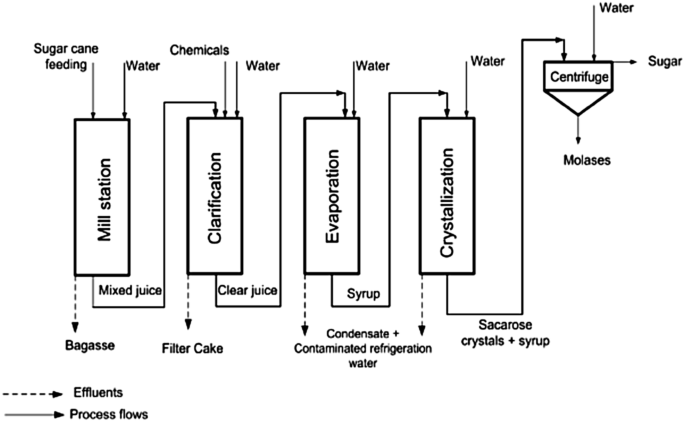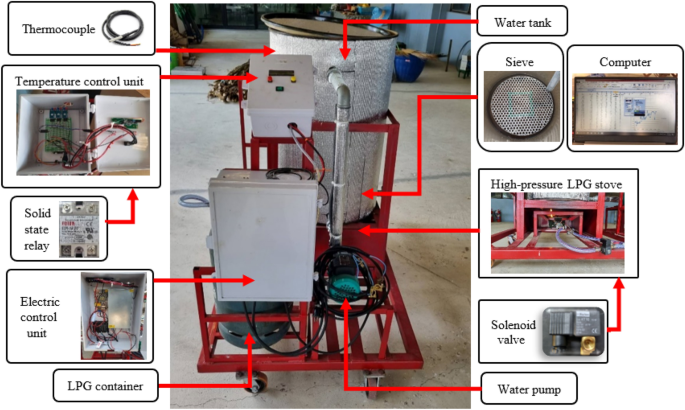Discover the Ingenious Benefits of Products From Sugarcane for Lasting Living
Sugarcane has actually arised as a critical resource in the quest for lasting living. Its diverse applications cover eco-friendly packaging, renewable power, and healthier food choices. As sectors look for green options, sugarcane's adaptability provides appealing remedies. The true potential of sugarcane expands past its existing usages. Exploring its innovative advantages might disclose brand-new paths towards a much more sustainable future. What various other possibilities might this remarkable plant hold?

The Rise of Sugarcane as a Lasting Resource
As global recognition of ecological issues grows, sugarcane has actually emerged as a famous lasting resource. This functional crop uses a variety of benefits that add to green methods. Sugarcane is a renewable source, capable of prospering in varied climates while soaking up co2, consequently alleviating greenhouse gas emissions. Its fast development cycle allows for regular harvesting, causing a constant supply of raw material.Additionally, sugarcane cultivation commonly calls for less water compared to various other crops, making it an effective choice in water-scarce areas. The spin-offs of sugarcane, such as bagasse and molasses, can be repurposed for various applications, decreasing waste and advertising circular economic climate principles. In addition, advancements in farming techniques have actually brought about even more lasting farming approaches, even more boosting sugarcane's ecological account. As consumers significantly look for lasting options, sugarcane sticks out as a feasible alternative for those devoted to lowering their eco-friendly footprint.
Biodegradable Packaging Solutions
How can biodegradable packaging options change the means customers approach sustainability? By utilizing sugarcane-based products, these cutting-edge remedies use a compelling alternative to conventional plastics. Biodegradable packaging made from sugarcane decays normally, noticeably lowering garbage dump waste and greenhouse gas emissions. As customers come to be significantly familiar with their environmental influence, the demand for lasting packaging continues to rise.These sugarcane-derived items not only offer useful functions yet likewise align with eco-conscious customer values. They give a tangible means for businesses and people to contribute to a circular economy, promoting source performance and reducing environmental impacts. Furthermore, as sectors embrace eco-friendly options, they cultivate a culture of sustainability that reverberates with a growing group seeking liable choices.In essence, naturally degradable product packaging options from sugarcane stand for a vital progression in sustainable practices, encouraging consumers to make eco-friendly choices without sacrificing benefit or top quality.
Renewable Power Generation From Sugarcane
A significant part of sustainable power generation can be stemmed from sugarcane, showcasing its flexibility beyond typical agricultural usages. Sugarcane biomass, consisting of bagasse and leaves, is a powerful source for bioenergy production. This biomass can be exchanged biofuels such as ethanol, which works as a cleaner choice to nonrenewable fuel sources. Additionally, the burning of sugarcane by-products creates steam and power, giving a power resource for sugar mills and neighboring communities.The growing of sugarcane also contributes to carbon sequestration, as the plants take in co2 throughout their development cycle. By utilizing sugarcane for power, waste is minimized, and sustainable practices are encouraged. This sustainable power approach not only supports energy demands but also promotes rural growth, producing tasks in bioenergy markets. On the whole, sugarcane stands out as an essential player in the shift to lasting power options, aligning with international initiatives to reduce carbon footprints.

Eco-Friendly Textiles and Fabrics
Green fabrics and materials derived from sugarcane present a promising option to conventional materials. These eco-friendly choices not only minimize environmental effect yet likewise provide durability and efficiency comparable to standard fabrics. Lasting production procedures additionally enhance their allure, making them an important part of a lasting way of life.
Naturally Degradable Textile Alternatives
Why is the modification towards biodegradable material alternatives crucial for sustainable living? The raising understanding of ecological destruction has actually prompted a look for alternatives to standard fabrics, which commonly add to contamination and waste. Eco-friendly textiles, stemmed from renewable energies such as sugarcane, supply an appealing service. These products decay naturally, minimizing landfill build-up and decreasing environmental influence. Additionally, they can aid lower carbon impacts and dependence on nonrenewable fuel sources. As consumers end up being extra eco-conscious, the demand for sustainable textiles grows, encouraging makers to innovate and invest in naturally degradable alternatives. This adjustment not just sustains lasting methods yet also cultivates a round economic situation, leading the way for a much more responsible approach to style and textile production.
Longevity and Efficiency
When examining green fabrics and textiles, longevity and efficiency are important aspects. Sugarcane-derived materials show excellent stamina and durability, making them suitable for numerous applications. These fabrics commonly display superior moisture-wicking buildings, which improve convenience in daily wear. Additionally, their all-natural fibers add to breathability, guaranteeing that garments remain fresh and wearable also popular conditions. The performance of sugarcane-based fabrics encompasses their resistance to tear and wear, allowing items to preserve their integrity gradually. Additionally, these green textiles can be dealt with to enhance UV protection and discolor resistance, meeting the sensible requirements of customers without compromising sustainability. Inevitably, sugarcane fabrics supply a harmonious equilibrium of longevity and performance, interesting environmentally mindful people.
Sustainable Production Procedures
The outstanding durability and efficiency of sugarcane-derived fabrics are enhanced by lasting production procedures that focus on ecological duty. These processes use renewable energies, reducing reliance on fossil fuels and minimizing carbon impacts. By using the byproducts of sugarcane farming, producers can develop green textiles while advertising waste decrease. Advanced techniques, such as water-efficient dyeing and naturally degradable therapies, additionally enhance the sustainability of these fabrics. Furthermore, using safe chemicals assurances that the production process does not hurt ecosystems or human wellness. This dedication to sustainability not just interest eco mindful consumers yet also supports neighborhood economic climates by promoting lasting farming techniques. In general, sugarcane-derived fabrics represent a substantial site web action in the direction of a greener future in the apparel industry.
Sugarcane-Based Biofuels and Their Effect

Sugarcane-based biofuels have become a substantial alternate energy resource, offering a sustainable remedy to the globe's growing energy needs. These biofuels, acquired from the fermentation of sugarcane juice or molasses, present a more lasting choice contrasted to fossil gas. Their manufacturing procedure generates lower greenhouse gas emissions, contributing to climate modification mitigation efforts.Additionally, sugarcane biofuels can improve power safety by branching out energy resources and minimizing dependancy on imported oil. The cultivation of sugarcane also promotes country advancement, creating tasks and stimulating regional economies.However, concerns relating to land usage and food competitors continue, as enhanced biofuel production might influence food supply chains. Lasting farming methods are vital to balancing these completing rate of interests and making sure that biofuel production does not undermine food safety. In general, sugarcane-based biofuels stand for a promising avenue for a greener power future, offered that their social and environmental effects are carefully managed.
Much Healthier Alternatives: Sugarcane in Food Products
While many consumers seek much healthier options in their diet regimens, sugarcane items supply a nutritious alternative to fine-tuned sugars and sweetening agents. Stemmed from the all-natural extraction of sugarcane juice, these items preserve crucial nutrients, consisting of minerals and vitamins, that are frequently shed in processed sugars. Sugarcane includes antioxidants and nutritional fiber, adding to total wellness and wellness.Many health-conscious individuals are turning to sugarcane syrup and jaggery, which provide a lower glycemic index contrasted to standard sugars, making them appropriate for those taking care of my company blood glucose levels. Furthermore, sugarcane-derived sweeteners can enhance the taste of numerous recipes without the adverse impacts related to synthetic additives.This shift towards natural artificial sweetener not only advertises much better nutritional choices yet likewise lines up with sustainable living techniques, as sugarcane is a renewable energy. Therefore, sugarcane items are arising as beneficial options in the domain of food items.
The Future of Sugarcane in Sustainable Advancements
The future of sugarcane is poised to incorporate innovative applications that prolong past traditional uses. Its possible as a source for eco-friendly product packaging solutions and sustainable energy resources highlights its role in lasting practices. Discovering these innovations might significantly influence environmental conservation and source administration.
Naturally Degradable Packaging Solutions
An increasing variety of business are turning to naturally degradable packaging options stemmed from sugarcane as an appealing alternative to conventional plastics. These innovative materials, commonly made from sugarcane fibers and bioplastics, break down normally, minimizing the durable environmental effect connected with traditional plastic waste. By making use of renewable energies, sugarcane-based product packaging adds to a much more lasting production cycle, aligning with international initiatives to deal with contamination and climate modification. Furthermore, these solutions commonly preserve the longevity and performance needed for various applications, from food containers to delivery products. As customer need for environment-friendly alternatives expands, services taking on sugarcane product packaging not just boost their brand name picture yet also play an essential role in promoting a round economic situation, paving the way for a greener future.
Renewable Power Sources
Naturally degradable packaging services are simply one element of the broader capacity of sugarcane in promoting sustainability. Another considerable application lies in renewable resource resources. Sugarcane is a functional plant that can be utilized to produce biofuels, such as ethanol, which acts as a cleaner choice to nonrenewable fuel sources. The fermentation process of sugarcane juice yields ethanol that can power vehicles and generate electricity. In addition, the byproducts of sugarcane handling, like bagasse, can be utilized to create biomass energy, providing a lasting and efficient approach to harness energy. This double role as both a source of biofuel and biomass highlights sugarcane's possibility in decreasing carbon exhausts and sustaining a shift to a more sustainable power landscape in the future.
Often Asked Questions
Just How Is Sugarcane Harvested Sustainably?
Sugarcane harvesting can be sustainable via techniques like hands-on cutting, which minimizes dirt disturbance, and using equipment that minimizes gas usage (Products From Sugarcane). Crop turning and integrated parasite administration better enhance ecological wellness and promote lasting soil fertility
What Are the Ecological Influences of Sugarcane Farming?

Can Sugarcane Products Be Reused?
The concern of whether sugarcane items can be recycled reveals a positive overview. Lots of sugarcane-derived products, such as internet bioplastics and product packaging, are made for recyclability, adding to a more sustainable waste management approach within environmental considerations.
Exist Any Kind Of Drawbacks to Using Sugarcane-Based Products?
The downsides of making use of sugarcane-based items include possible land usage competition with food crops, challenges in large-scale production, and concerns about the environmental influence of monoculture farming practices, which can lessen biodiversity and soil health and wellness.
Just How Does Sugarcane Growing Affect Citizen Communities?
Sugarcane growing influences local communities by supplying job opportunity and enhancing regional economic climates. However, it can also bring about land conflicts and environmental problems, impacting agricultural techniques and neighborhood health and wellness, necessitating a well balanced strategy to development. Advancements in farming practices have actually led to more lasting farming methods, better improving sugarcane's ecological profile. Additionally, the burning of sugarcane byproducts produces vapor and power, offering a power source for sugar mills and neighboring communities.The growing of sugarcane additionally contributes to carbon sequestration, as the plants take in carbon dioxide throughout their growth cycle. By utilizing sugarcane for power, waste is lessened, and sustainable methods are encouraged - Products From Sugarcane. Sugarcane consists of anti-oxidants and nutritional fiber, adding to overall wellness and wellness.Many health-conscious individuals are transforming to sugarcane syrup and jaggery, which provide a lower glycemic index contrasted to standard sugars, making them ideal for those handling blood sugar degrees. Additionally, the by-products of sugarcane processing, like bagasse, can be utilized to produce biomass energy, offering a sustainable and efficient approach to harness power